As I said in a comment, there are an infinite number of possible solutions. Two possible solutions follow:
A Normal (aka Gaussian) distribution with a mean of 0 and a standard
deviation of 0.06079 will have 90% of its outcomes between -0.1 and
+0.1, so generate a standard normal and multiply it by 0.06079. Technically you should check whether the absolute value exceeds 1,
but that corresponds to getting outcomes at 16 sigma -- it's just
not going to happen.
However, you might not like solution that because it won't span
the entire range in practice. A variant which will is to generate
X as described in the prior paragraph, and if X < -0.1, replace
it with a Uniform(-1, -0.1). Similarly, if X > 0.1, replace it
with a Uniform(0.1, 1).
I implemented both of these, generated 100,000 values, and here are the histograms:

Note that the 5th and 95th quantiles are -0.0998 and +0.09971, respectively, effectively -0.1 and +0.1 to within sampling error.
